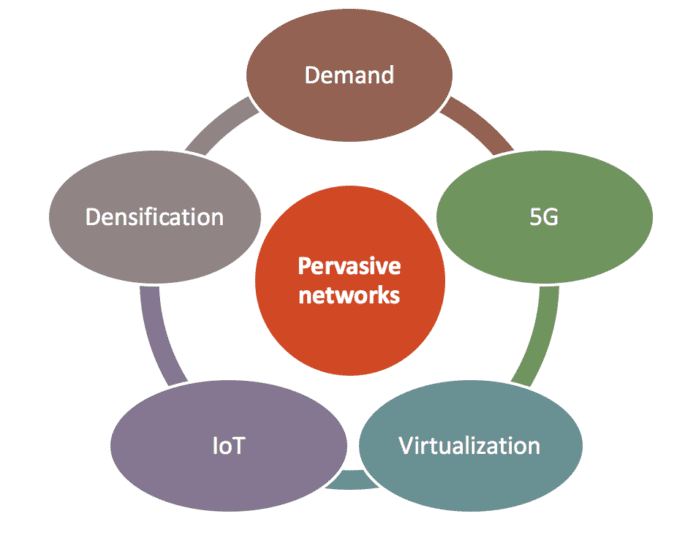The evolution to 5G requires a new approach to network architecture
In order to realize the 5G future, “We can’t just do more of the same to get more out of our networks,” analyst Monica Paolini of Senza Fili said in a recent webinar addressing convergence of wireless and wireline networks, spectrum bands and industry approach.
“We all know that there is an increasing usage, everybody wants to use mobile networks, wireless networks. It’s clear that networks are asked to do more with basically the same level of funding. The issue is we can’t just do more of the same to get more out of our networks.” They have to be designed and operated in a new way.
Paolini described this as a shift from atomic networks to pervasive networks.
“There are different trends that are driving us to pervasive networks,” she said, that will increase flexibility a dynamic functionality. Today, “Different elements to different things…one cell, one area. Everything is pretty much very stable, but doesn’t really meet the demand that we have out there. Instead, pervasive networks are going to take us to converged networks at different levels. That will allow us to address demand in a much different way. Eventually we might be getting to a situation where there are no more cells–cels in the sense of separate units. There will be antennas placed in the environment providing ubiquitous coverage, but we don’t have the same distinction. We will move from a single-layer architecture to a multi-layer architecture.” And capacity will be made available based on the service requirements of a given application–this gets into the 5G idea of network slicing wherein a bespoke data pipe is automatically provisioned to perfectly meet the requirements of an application across domains from the device to the cloud.

Another factor informing 5G network architecture is the physical location of hardware and virtualized functionality. “Location becomes much more important because, depending on where you put a function, you have a difference in performance. Everything becomes more fluid and more dynamic. As a result, also the separation between core and RAN disappears. You have on the one end, The RAN end becomes virtualized, and so it moves towards a more centralized type of architecture. And then the core, with things like mobile edge computing, moves to the edge and becomes more distributed. This is actually taking us to KPIs like latency that are becoming much more important. QoE becomes more important than KPIs themselves so we need to understand what is the perceived performance rather than the performance itself.”
For more from Paolini and representatives from CommScope, Corning and Boingo Wireless, check out the video webinar below, and download the accompanying report.

